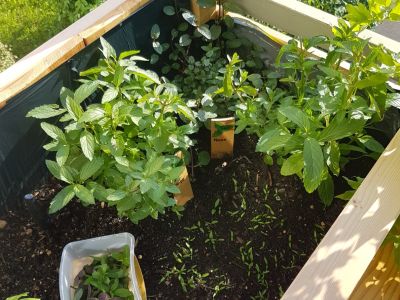How to Start an Organic Herb Garden
Apart from convenience, one of the best things about growing your own food is that you know exactly what goes into producing it. Growing organic herbs in your garden is as easy as using only organic certified materials and avoiding non-certified ones. Since you’re in control, there are no surprise chemicals and being in control of herbs is so easy. Most of the popular herbs in Western cooking are native to the Mediterranean, so they thrive in similar conditions. This means well-drained neutral soil, preferably with some organic matter, like compost or manure. Herbs can be grown from seed or propagated from cuttings, divisions, or layering. Tarragon, chives, and mint all grow well from division. Lavender, sage, lemon balm, and rosemary can all be grown from cuttings. Layering, the process of starting roots from a branch that is still actively growing on the mother plant, works well for herbs with flexible stems, such as:
Thyme Lemon balm Sage Rosemary Bay Winter savory
All other herbs can be sown from seed. If your area experiences hard winters, start your seeds indoors in late winter and transplant them outside when the weather warms. Anise, cilantro, fennel, and dill should be sown directly in the ground in the spring.
Growing Organic Herbs in Pots
Growing organic herbs in pots is a great alternative to planting them outdoors. Even if you have space in your garden, you may want to consider growing your herbs in containers. You can bring them inside to overwinter, and you can keep them on hand in or near your kitchen for cooking. Most herbs need at least six hours of direct sunlight, so make sure you have adequate space near a south-facing window for wintertime. If you don’t, invest in some grow lights to keep them happy. Make sure not to over fertilize– herbs don’t really need fertilizer, and while it makes the leaves more plentiful, it makes the scented oils more diffuse. In containers, where fertilizer can build up, just skip it.
